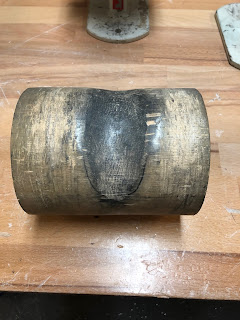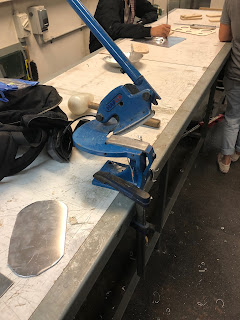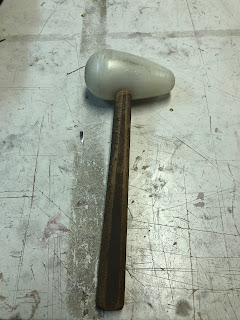Beil 0014 - The Torus

The Torus: Creation Process: 1. The first step of the torus was to measure and cut the aluminium sheet to correct size. The next step was to create some guide-lines that were able to ensure that the correct shape was achieved. 2. By utilizing the timber stumps that were provided, clamped into the vice the general curvature was created through hitting the middle / divot in the stump to get the first curve along the centre of the metal. 3. The next stage involved utilsing the anvil to create the other method of curvature. By moving the aluminium into different directions / angles the overall curvature to the external of the aluminium was developed whilst maintaining the curvature created by the stump. 4. Then by using a plenishing hammer, the overall marks / lumps in the torus could be removed however required more finishing methods at a later stage. Another benefit that the plenishing hammer had was the fact that it was able to refine the overall external curvatu

